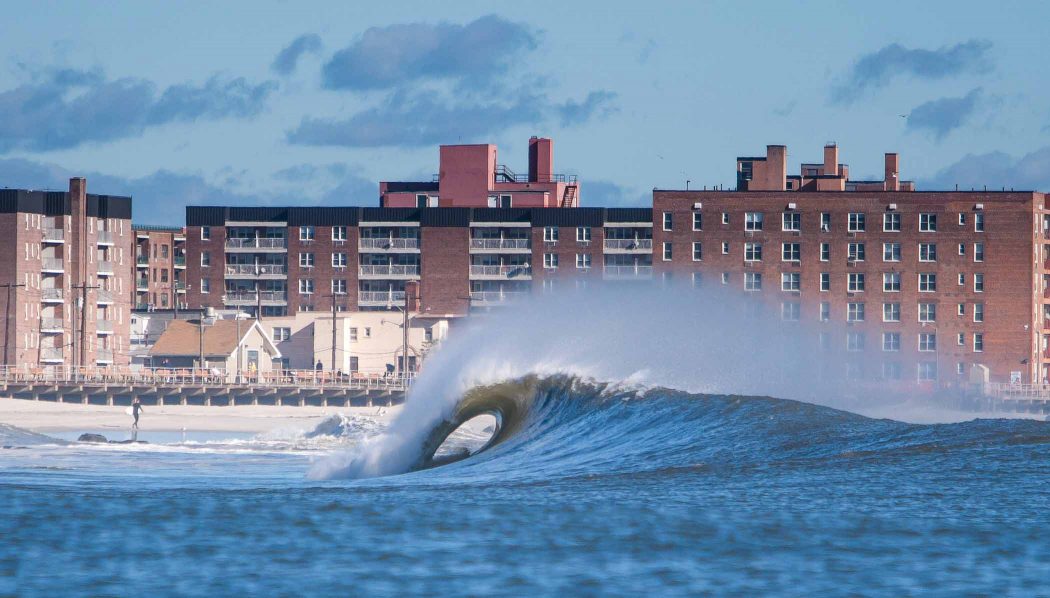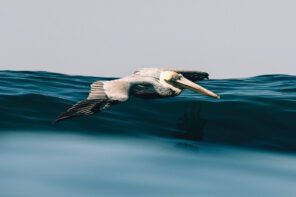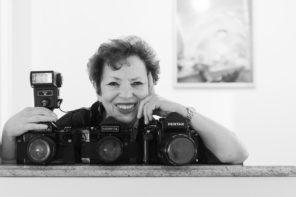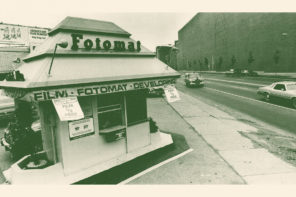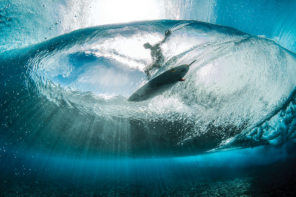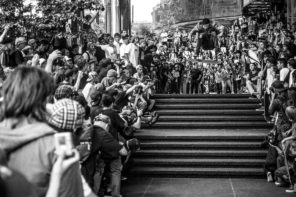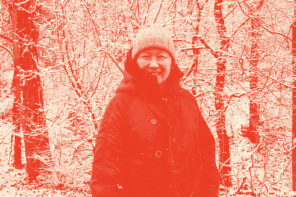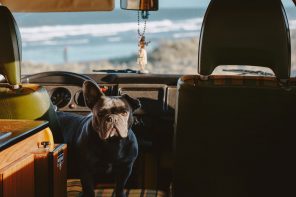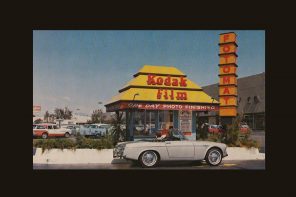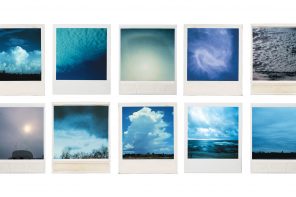A conversation about surf photography in New York likely isn’t a good conversation about surf photography in New York unless it includes the vocalization of two names: Mike Nelson and Matt Clark. The two Long Island lensmen and their well-recognized bodies of work are everywhere under the sun, and moon, right now—on the covers of the most read surf publication in circulation, on the projector screens at career-making award shows, and on tens of thousands of social media users’ cellular device displays anytime even a trickle of swell hits the Northeast.
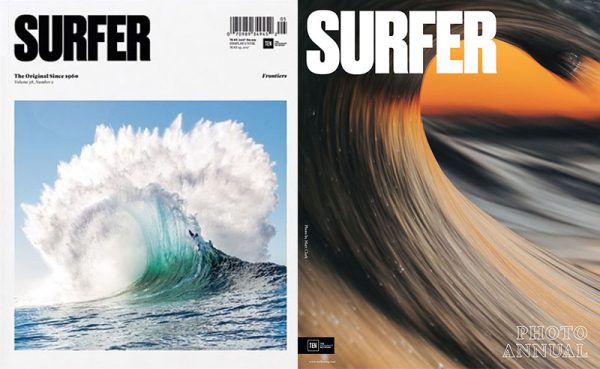
With both Mike and Matt set to open a collective photo exhibition this Friday at the Picture Farm Gallery in Brooklyn, I figured it might not be a terrible time to get in touch with both of ’em and explore their relationship with each other, as well as their individual approaches to and perspectives on capturing the Empire State’s coastline.
Can you guys recall the first time meeting each other?
Mike Nelson: The first time we met was during the Red Bull Photo Workshop. Since then, I have been following Matt’s work because, honestly, it’s next level and inspires me to get out there and rethink the way I shoot.
Matt Clark: The first time we officially met I think was during the Red Bull surf photography tutorial in New York in the summer of 2007, but I had known of Mike’s work since at least 2000-ish and followed his work through-and-through. He was getting his name out there in a big way as an East Coast photographer and being that I was from pretty close by, I would see him occasionally shooting when the surf was good. Before all that, I had actually called up unsOund a few times to try and get sponsored, and ask them stupid questions as a kid, but I’m not sure we knew who each other was at that point.
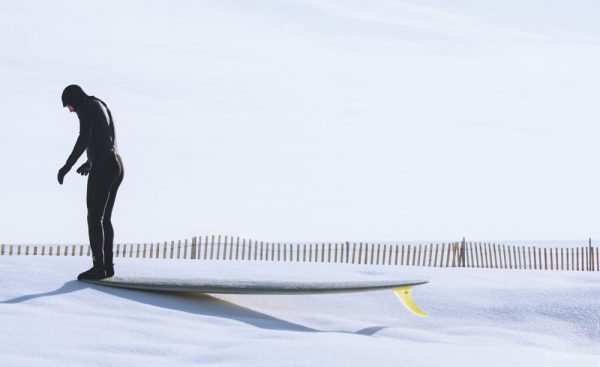
Photo: Matt Clark
What would you say in the most difficult part of being a surf photographer in New York?
MN: For me, the most difficult aspect of being a surf photographer is the lack of consistency in the surf. It is hard to experiment when you only have a few really good days every year, so I often find myself “playing it safe” to just get some decent shots.
MC: In my opinion, it’s hard to find hard-working and talented surfers in NY to shoot with. While we are on an island that isn’t huge by any means, coordinating a session to shoot photos is a pain. It’s also been incredibly difficult for me to leave my home spots and drive with my fingers crossed to go shoot people 30 minutes away. It’s been hard to motivate myself to chase surfers around, and I’ve basically put that chapter to rest in regards to NY. If we are traveling though, I consider myself on the clock and I am stoked to shoot in water for 6-8 hours a day. The water is my home.
What about the easiest part?
MN: Well it’s home, so I kinda know where to go and when. Basically, it’s way easier to formulate an opinion on what surf spot will be good, compared to guessing when I’m on a surf trip elsewhere.
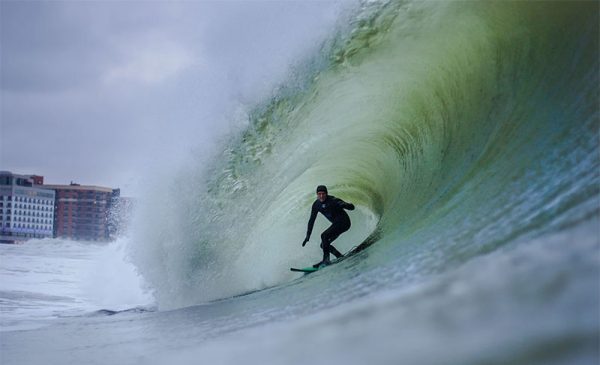
Sam Hammer. Photo: Mike Nelson
MC: It used to be easy to get attention, as we are in NY and that in itself gives you an advantage. New Jersey, Massachusetts and other northeastern states—they get better waves but don’t have as much allure for magazines. It’s easier for the magazines to run a photo of NY and come up with a caption than it is to come up with something about New Hampshire, even though the waves absolutely demolish anything we get in NY in my opinion.
What are you guys’ thoughts on the debate between film vs. digital?
MN: I hate to say it, and the purists may hate me for saying it, but I’m over film. I’m happy that the days of film are gone. I have nightmares about the “good old days.” Loading up my water housing and swimming out in 32 degree water only to shoot 36 shots before I had to get out of the water and put another roll of film in the camera. Think about it. You shoot a sequence of like five or six shots, which means you can shoot six or seven waves, and then you have to get out of the water. I urge all of the purists out there to limit yourself to shooting seven waves next time you are at the beach and see how much fun you have. Wow, film makes me angry [laughs].
MC: Digital offered me the ability to refine my craft and practice over and over again. very quickly and for cheap, whereas my film work is intensive and much more of a craft. To me though, film vs. digital is just a question of medium. Is one worth more than the other? Maybe. I have some plans for some film work in the future, and I hope it ends up being worth it because I’m starting to miss that feeling of having to wait to get my work back from being processed and the organic feel of film work.
What’s your single favorite photo of each others?
MN: It’s a tall task to pick just one of Matt’s images. We all know his in-water empties are as good as anyone’s on the planet, but my all time favorite shot of Matt’s is this one—it’s just plain crazy.
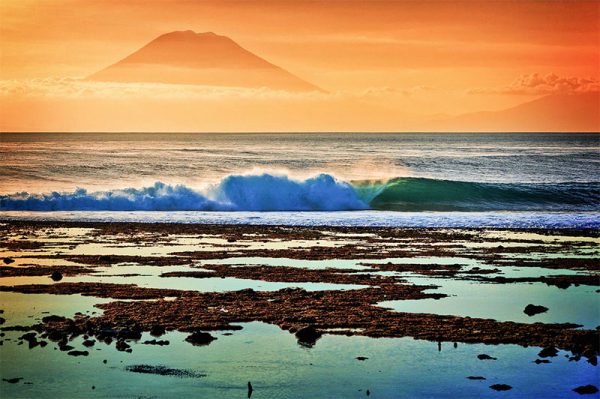
Photo: Matt Clark
MC: Probably this photo of James Theobald. This was one of the better days I’ve seen around here and this is just a solid wave with James getting shacked. So damn rad!
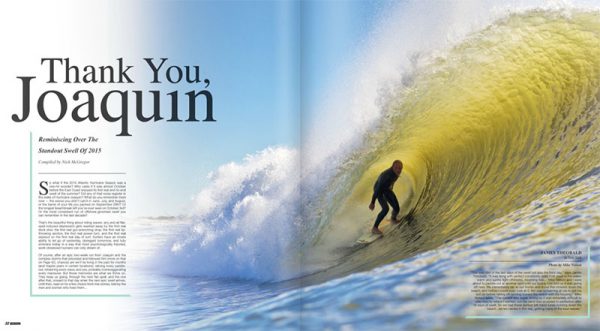
James Theobald, as featured in New Eastern Surf Mag. Photo: Mike Nelson
What has been the most enjoyable achievement in your career as a surf photographer?
MN: I don’t know If I have a most enjoyable professional “achievement,” I just enjoy every moment that I get to take surf photos. What I can say is my most enjoyable project ever was collaborating with ESM on Always Right. Always Right was a series of magazine articles and a video composed from different surf trips that I was fortunate enough to be a part of. During this process I got to work with two East Coast legends, Dick Meseroll and Tom Dugan, the founders of ESM.
MC: The most enjoyable moment was probably when I was awarded the Follow the Light Foundation Grant in 2007 for my work. I traveled to California only knowing I was in the final five and had no idea what to expect. That night I was able to meet so many rad people, including Chris Burkard, who won the year before, and Todd Glaser, who won the year after. I pride myself on being a part of that small group of photographers who were recognized by the top people at Surfing Magazine and the foundation—all for the work I was doing in NY.
When they announced I was who they were awarding with the grant, I felt like such a kid and was in complete shock. I’m still amazed every time I think about the fact that I am still just a kid who grew up in Astoria in the 80s. I really identify as that person and the fact that I even go in the ocean is amazing to me because I didn’t do that until I was like 11 years old.
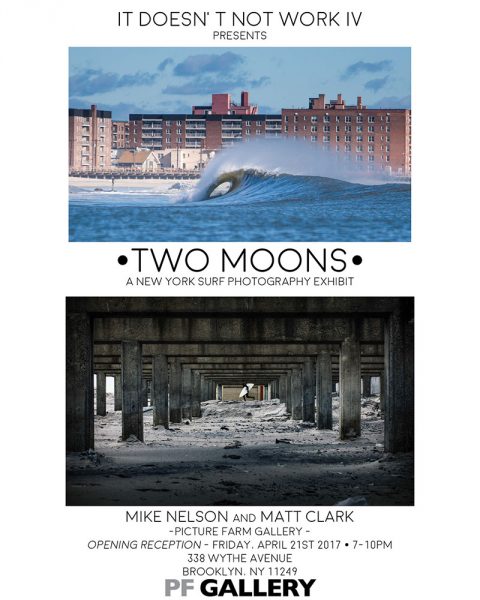
The Two Moons Exhibit will host its opening reception this Friday April 21, 2017 at Picture Farm Gallery in Brooklyn and is part of the annual It Doesn’t Not Work Surfcraft Design Symposium. Shoutout to Tyler Breuer for helping this interview come together.

